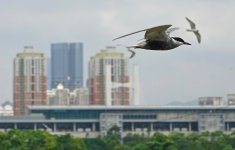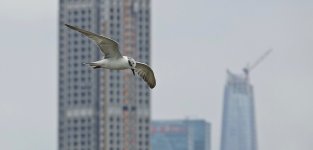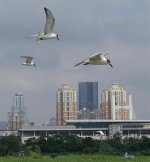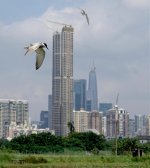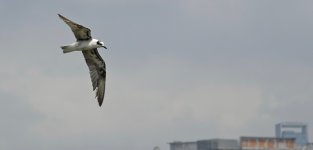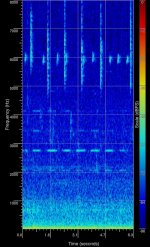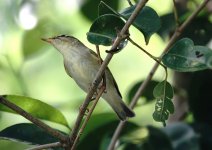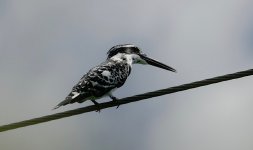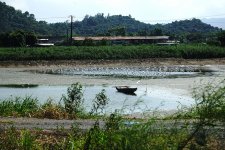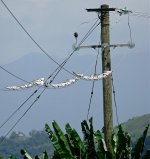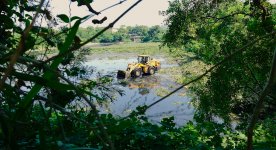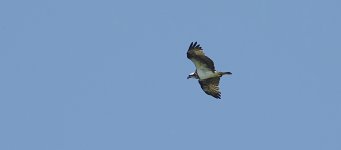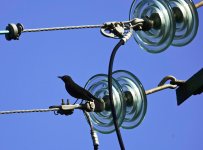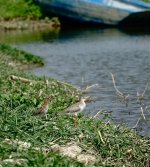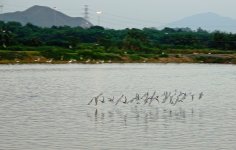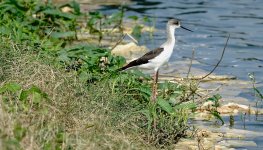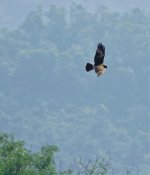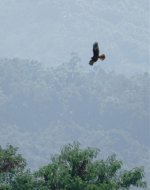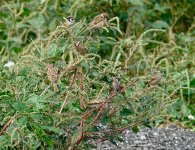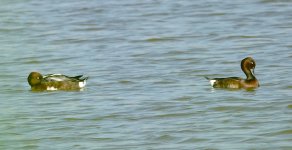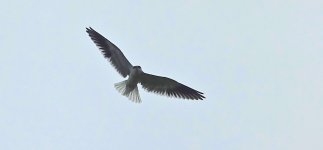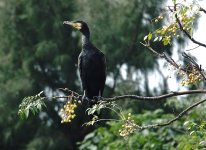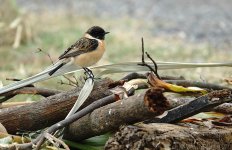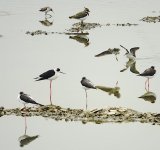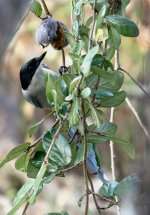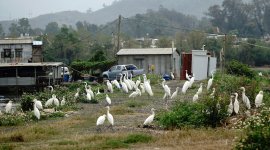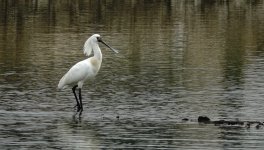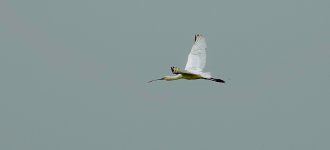MKinHK
Mike Kilburn

After not getting round to posting last week's visit I'll post that first before updating on yesterday's hobble round San Tin.
Last week was all about the terns. 125 Whiskered Terns and a single White-winged Tern, which helpfully showed black botchers on the underwing coverts, offered a wonderful spectacle as they hunted low along the edges of a couple of accessible ponds, coming within a couple of metres in regular loops that allowed even the most hopeless of bird in flight photographers to get some nice results.
Another nice addition was a drained pond with a nice mix of waders that included 6 Red-necked Stints, 5 Long-toed Stints, 4 Marsh Sandpipers, a Curlew Sandpiper, Common Redshank and a patch first Dunlin along with the usual suspects. A solitary female Garganey also found the drain-down feeding opportunities to her liking. This pond also held my first Richard's Pipits and Stejneger's Stonechats of the autumn.
Other good birds included a second Himalayan Swiftlet over the same pond as the previous bird, an Eastern Marsh Harrier and a pair of Yellow-breasted Buntings flushed unexpectedly from the long grass near the Manchurian Reed Warbler pond. I also enjoyed the gathering of several hundred Great and Little Egrets making life miserable for the small fish , shrimp and other designs in the last dregs in a drained pond from which all the commercial sized fish had already been extracted.
On the way out past the flood alleviation pond I was pleased pick up a skulking Dark-sided Flycatcher and a calling Pale-legged Leaf Warbler in the surrounding hedge, the latter whose identity I was able to confirm with the attached sonogram showing it calling at 6000Hz, instead of the lower 4800-5000Hz of Sakhalin Leaf Warbler. I still need Sakhalin for my HK list, and the iPhoneX voice record function plus the super cheap SpectrumView app looks like providing a way to definitively prove that I've nailed it when I eventually do!
Cheers
Mike
Last week was all about the terns. 125 Whiskered Terns and a single White-winged Tern, which helpfully showed black botchers on the underwing coverts, offered a wonderful spectacle as they hunted low along the edges of a couple of accessible ponds, coming within a couple of metres in regular loops that allowed even the most hopeless of bird in flight photographers to get some nice results.
Another nice addition was a drained pond with a nice mix of waders that included 6 Red-necked Stints, 5 Long-toed Stints, 4 Marsh Sandpipers, a Curlew Sandpiper, Common Redshank and a patch first Dunlin along with the usual suspects. A solitary female Garganey also found the drain-down feeding opportunities to her liking. This pond also held my first Richard's Pipits and Stejneger's Stonechats of the autumn.
Other good birds included a second Himalayan Swiftlet over the same pond as the previous bird, an Eastern Marsh Harrier and a pair of Yellow-breasted Buntings flushed unexpectedly from the long grass near the Manchurian Reed Warbler pond. I also enjoyed the gathering of several hundred Great and Little Egrets making life miserable for the small fish , shrimp and other designs in the last dregs in a drained pond from which all the commercial sized fish had already been extracted.
On the way out past the flood alleviation pond I was pleased pick up a skulking Dark-sided Flycatcher and a calling Pale-legged Leaf Warbler in the surrounding hedge, the latter whose identity I was able to confirm with the attached sonogram showing it calling at 6000Hz, instead of the lower 4800-5000Hz of Sakhalin Leaf Warbler. I still need Sakhalin for my HK list, and the iPhoneX voice record function plus the super cheap SpectrumView app looks like providing a way to definitively prove that I've nailed it when I eventually do!
Cheers
Mike
Last edited:




